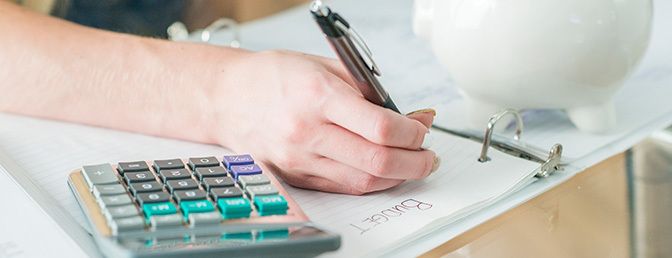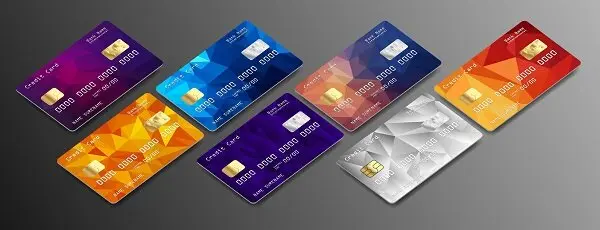Why Financial Literacy Is Not Just a Buzz Term

- Data shows that many Americans could use a refresher in financial literacy.
- Educating yourself could help you meet goals and improve your financial situation.
- Focus on building skills like budgeting, saving money, and managing debt.
Chances are, you’ll make a financial decision almost every day of your life. But if you were never taught to navigate financial issues, it’s understandable that you might struggle to make the best possible choices.
You can gain the knowledge you need.
Many Americans lack financial literacy because they never learned it at school or at home. Lawmakers want to change that. Nex Gen Personal Finances says that 29 states require students to take a personal finance course to graduate from high school. In 2022, only 15 states had that requirement. The push for financial literacy is a relatively new thing. If you’ve been out of school for a good number of years, chances are it wasn’t part of your curriculum.
Given this recent shift toward financial literacy, it’s not surprising that only 30% of Americans feel very confident managing their finances, according to recent data from Thrivent. And MarketWatch reports that the average American scores 46% on a basic quiz on financial literacy. So if you could use some help in that area, you’re not alone.
Boosting your financial literacy skills can help you make savvy financial decisions and improve your personal financial picture. Here are some key skills worth focusing on.
Budgeting
One reason some people end up in debt is that they didn’t get taught how to follow a budget. Setting up a budget is simpler than you might think.
You can write one down on paper, create a spreadsheet that lists your various expenses, or download an app like EveryDollar or PocketGuard. Don’t be afraid to try different apps until you find one that works for you.
The nice thing about budgeting is that it shows you where your money is going every month. It can also help you make informed decisions about what you should and shouldn’t spend money on, based on what your essential bills look like relative to your paycheck.
Saving Money
Having money set aside is the ticket to avoiding debt. If you have an emergency fund, you may be able to dip into it rather than use a credit card to pay for an unplanned expense.
As a general rule, it’s a good idea to have a three-month emergency fund—savings that can cover all of your expenses for three months in the event you lose your job. Once you get into the habit of budgeting, you may find that you have an easier time saving money. And if there’s not much wiggle room in your budget for savings right now, a side hustle could be your ticket to extra cash.
Managing Debt
It’s not an unusual thing—or always a bad thing—to have debt. Debt only becomes a problem when you can’t keep up with your payments.
Part of being financially literate is understanding the difference between good and bad debt. Good debt serves a helpful purpose. In the case of a mortgage, it helps you build equity in a home that can gain value over time. In the case of an auto loan, it gives you access to a vehicle that may help you get to work and earn an income.
Credit card debt, though sometimes unavoidable, is generally considered bad debt because it can cost you a lot of money in interest. And often, credit card debt doesn’t serve a helpful purpose like a mortgage or auto loan (though there can be exceptions, such as if you took a class to further your career and charged it on a credit card).
Try to keep credit card debt to a minimum so you don’t have to spend a lot of money on interest. And, if possible, don’t make just your minimum credit card payments each month. Aim to pay down as much of your balance as possible, if not your whole balance.
And be careful with good debt, too. A mortgage you can’t afford won’t help your financial situation.
Once you have your budget set up, you may have a better sense of how much debt you can afford to take on. And if you're already in debt and are struggling to manage it, you may want to consider getting professional help with debt settlement. A debt settlement company can negotiate your balances with your creditors to help you get debt free.
Financial Literacy Isn't Just a Buzz Term
Financial literacy might seem like one of those buzz terms you keep hearing on the internet, but it’s actually a very important thing. And there are plenty of resources to help you improve your financial literacy.
Now that you have a basic idea of budgeting, saving, and managing debt, don’t stop there. Pick a financial topic to explore every month and read up on it, whether it’s retirement, investing, or insurance. The more you educate yourself, the more confidence you’re likely to have in your financial situation.
Debt relief by the numbers
We looked at a sample of data from Freedom Debt Relief of people seeking credit card debt relief during October 2025. This data reveals the diversity of individuals seeking help and provides insights into some of their key characteristics.
Credit card balances by age group for those seeking debt relief
How do credit card balances vary across different age groups? In October 2025, people seeking debt relief showed the following trends in their open credit card tradelines and average credit card balances:
Ages 18-25: Average balance of $9,117 with a monthly payment of $276
Ages 26-35: Average balance of $12,438 with a monthly payment of $373
Ages 36-50: Average balance of $15,436 with a monthly payment of $431
Ages 51-65: Average balance of $16,159 with a monthly payment of $534
Ages 65+: Average balance of $16,546 with a monthly payment of $490
These figures show that credit card debt can affect anyone, regardless of age. Managing credit card debt can be challenging, whether you're just starting out or nearing retirement.
Home-secured debt – average debt by selected states
According to the 2023 Federal Reserve Survey of Consumer Finances (SCF) (using 2022 data) the average home-secured debt for those with a balance was $212,498. The percentage of families with mortgage debt was 42%.
In October 2025, 25% of the debt relief seekers had a mortgage. The average mortgage debt was $236504, and the average monthly payment was $1882.
Here is a quick look at the top five states by average mortgage balance.
| State | % with a mortgage balance | Average mortgage balance | Average monthly payment | |
|---|---|---|---|---|
| California | 20 | $391,113 | $2,710 | |
| District of Columbia | 17 | $339,911 | $2,330 | |
| Utah | 31 | $316,936 | $2,094 | |
| Nevada | 25 | $306,258 | $2,082 | |
| Massachusetts | 28 | $297,524 | $2,290 |
The statistics are based on all debt relief seekers with a mortgage loan balance over $0.
Housing is an important part of a household's expenses. Remember to consider all your debts when looking for a way to get debt relief.
Regain Financial Freedom
Seeking debt relief can be the first step toward financial freedom. Are you struggling with debt? Explore options for debt relief to regain control of your finances. It doesn't matter how old you are or what your FICO score or credit utilization is. Take the first step towards a brighter financial future today.
Show source
Author Information

Written by
Maurie Backman
Maurie Backman is a personal finance writer with over 10 years of experience. Her coverage areas include retirement, investing, real estate, and credit and debt management.

Reviewed by
Kimberly Rotter
Kimberly Rotter is a financial counselor and consumer credit expert who helps people with average or low incomes discover how to create wealth and opportunities. She’s a veteran writer and editor who has spent more than 30 years creating thousands of hours of educational content in every possible format.
What’s the #1 rule of budgeting?
Spend less than you earn.
How long does it take to build an emergency fund?
Try to save the first $1,000 within 6-12 months. Be aggressive and make sacrifices. Challenge yourself to make a budget, look for ways to save, and set milestones to reach and celebrate.
Here’s how one family of four might do it if their goal is to save $2,500.
Drag everything unneeded out of the closets and sell it, netting $700
Give up two subscriptions: $40 per month
Shave 10% off the grocery bill: $60 per month
Switch mobile plans: $50 per month
Cut one restaurant dinner out: $100 per month
Cut 10% of driving: $25 per month
Goal reached in less than 7 months.
How much credit card debt is normal?
What’s normal for one person might be troubling for another. The best amount of credit card debt is the amount that you can afford to pay off when you get the bill. A person’s total financial picture, including salary, financial goals, and other debts, could give a better sense of what’s manageable.

